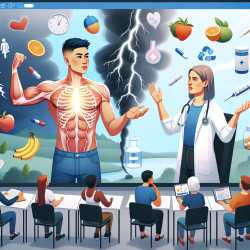Introduction
The COVID-19 pandemic has reshaped the way we interact, learn, and communicate, particularly affecting adolescents who are at a critical stage of development. With traditional in-person interactions limited, social media (SM) has emerged as a vital tool for engagement and information dissemination. The research article "Real-Time Communication: Creating a Path to COVID-19 Public Health Activism in Adolescents Using Social Media" highlights the potential of SM to promote public health activism among adolescents.
Understanding the Power of Social Media
Adolescents are prolific users of SM, with platforms like YouTube, Instagram, Snapchat, and TikTok dominating their daily interactions. These platforms offer unique affordances—functional, social, cognitive, emotional, and identity—that align with adolescent development, making them powerful tools for engagement and education.
Implementing Risk Communication Strategies
The Centers for Disease Control and Prevention's (CDC) Crisis and Emergency Risk Communications (CERC) framework offers a structured approach to disseminating information during crises. By integrating CERC principles with SM affordances, practitioners can effectively reach adolescents with accurate, timely, and engaging content.
- Be First: Quickly disseminate information to become a trusted source.
- Be Right: Ensure accuracy to build credibility.
- Be Credible: Maintain honesty and truthfulness.
- Express Empathy: Acknowledge the emotional impact of the crisis.
- Promote Action: Encourage meaningful activities to foster control and calm.
- Show Respect: Use respectful communication to build rapport.
Engaging Adolescents in Public Health Activism
To activate adolescents as health advocates, content must resonate with their experiences and interests. By leveraging the identity affordance of SM, health organizations can craft messages that adolescents are motivated to share, thus amplifying their reach and impact.
Collaboration with influencers and peers can further enhance message dissemination. Adolescents are more likely to engage with content endorsed by their peers or admired figures. This peer-led approach can transform adolescents from passive recipients to active participants in public health advocacy.
Addressing Misinformation
Misinformation on SM is a significant challenge, particularly for adolescents who may rely on these platforms as primary news sources. By prioritizing accurate and engaging content, health organizations can counter misinformation and promote informed decision-making.
Interactive content, such as quizzes or multimedia presentations, can enhance cognitive engagement and reinforce accurate information. This approach not only educates but also empowers adolescents to discern credible sources from misinformation.
Conclusion
As practitioners, we have the opportunity to harness the power of SM to engage adolescents in public health activism. By understanding and utilizing the affordances of these platforms, we can create a dynamic and responsive communication strategy that resonates with adolescents, empowering them to become advocates for their health and the health of their communities.
To read the original research paper, please follow this link: Real-Time Communication: Creating a Path to COVID-19 Public Health Activism in Adolescents Using Social Media.










